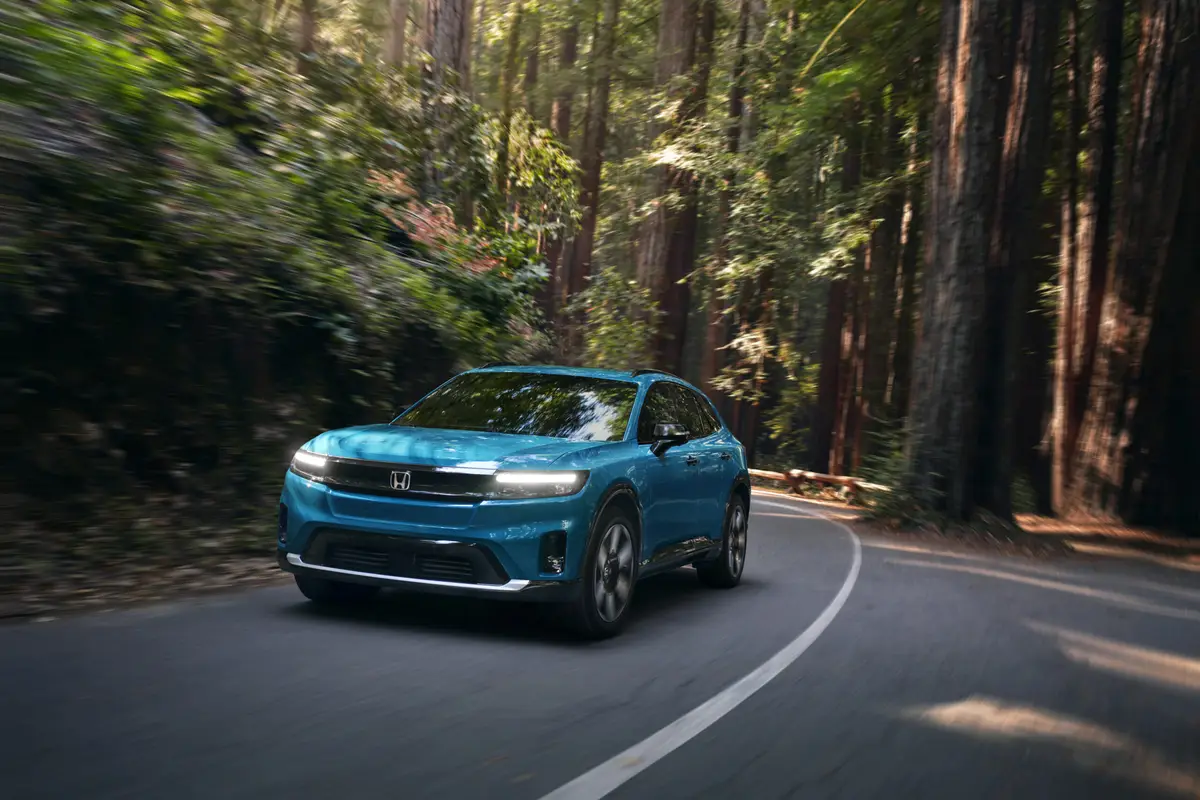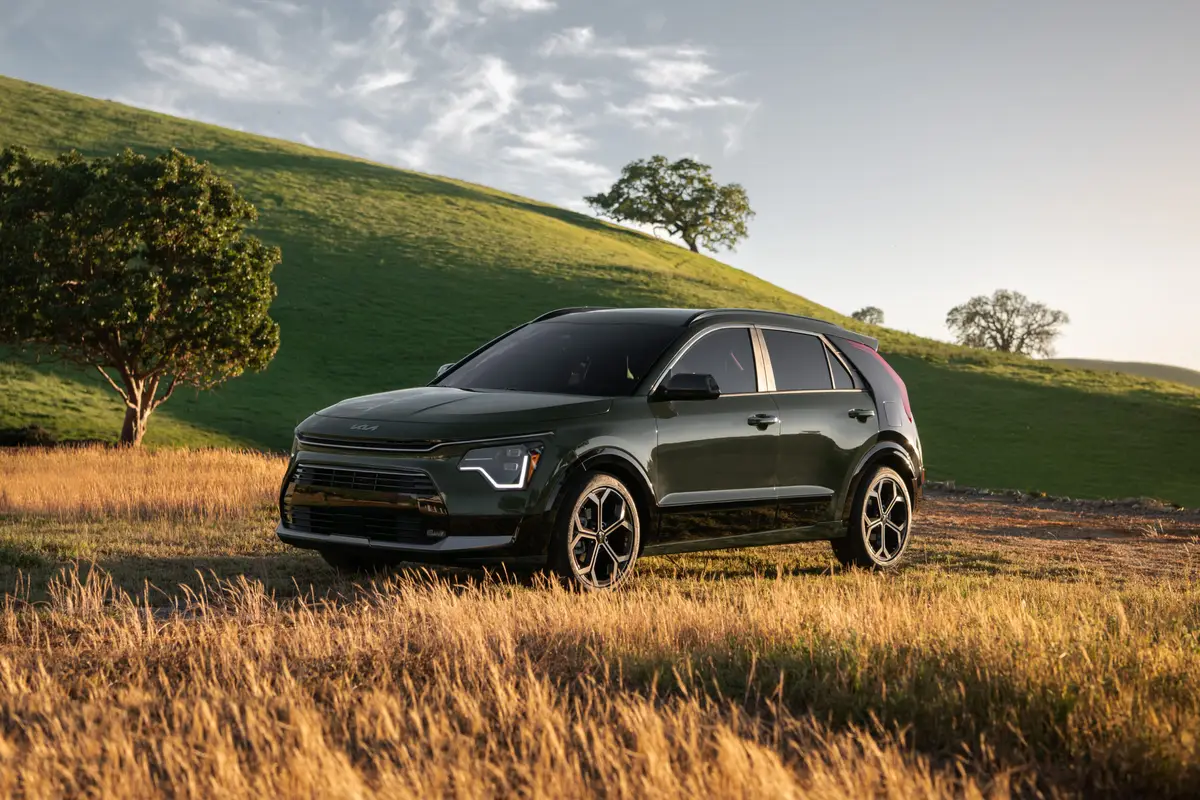The Sacramento Bee's view
For the record, I had no problem with the looks of last year’s Pontiac Aztek.
Best as I can tell, that puts me in a minority that includes me and some guy in Peoria, Ill.
To bring everyone up to date, Pontiac introduced its boldly different crossover Aztek — technically a sport-utility vehicle but with numerous amenities added for devoted outdoor types — in 2001 as a rugged transport that hopefully would appeal to generally young buyers who worked hard during the week but had no trouble getting their shoes muddy (or sandy) on weekends.
Pontiac’s reward was a firestorm of criticism. The heat centered on two topics: Aztek was ugly, and it was overpriced.
Red-faced engineers were pressed into duty to make Aztek over for the 2002 model year. They ditched the gray, plastic lower body extensions with single-ribbed extensions matching the overall body color. It’s a cleaner look to be sure, making the Aztek appear more like an urban SUV and less like a vehicle for taking on the Australian Outback.
The black rubber strip that ran across the hatchback window has been replaced by a body-colored spoiler. Up front, the big orange-colored marker lamps of the 2001 Aztek have been replaced with less-conspicuous lamps with clear lenses.
In the words of Aztek Brand Manager James Vurpillat, “We’ve softened the look.”
Yes, and Pontiac knocked $1,500 off the bottom line for 2002.
For my test model, a front-wheel-driving Aztek, that translated to a starting price of $19,995. Dressed up with a feature-loaded, optional comfort-and-security package that included a six-way power driver’s seat, traction control and an OnStar communications system, the test vehicle came in $23,945. An all-wheel-drive Aztek starts at $22,995.
Whatever your choice, both Azteks get the 3.4-liter V-6 (185 horsepower) matched with a four-speed automatic gearbox. Fuel economy on the FWD version (19 miles per gallon in the city; 26 mpg on the highway) is just a touch better than what you get on the AWD (18/24).
While Aztek is far from a hot rod, the power package is more than adequate. Even in front-wheel-drive trim, the Aztek performed well on city streets and on the interstates. It scooted up hills and tackled off-road duty with vigor about an hour’s drive north of Sacramento. Water and mud were easily washed off the new body sides.
I don’t see why the old hard-plastic cladding was taken off the vehicle. I mean, the Aztek was supposed to take on the wilderness and all its mud and rocks and whiplashing tree branches. I guess the current Aztek just looks better from the outside when it’s doing the heavy lifting.
One of the biggest gripes folks had with the look of last year’s Aztek was the tail end. Too big, they said.
Once again, I don’t get it. The tailgate was designed to be a seating/serving surface for outdoor adventures, stadium parking lot cookouts or beach parties. You can hook a tent onto the back of the Az tek, knock the rear seats out of the way (your choice of rear folding or captain’s chairs) and sleep in the back of it, for crying out loud!
Yes, the back end has to be big for that sort of thing, the same way a motel room has to have room for beds, furniture, the TV … you get the picture.
Thankfully, the 2002 Aztek retains most of the functional hardware to make it the multipurpose enjoyment vehicle it was intended to be. And the cool stuff is still there; the center console that doubles as a cooler that can hold a dozen 12-ounce beverage cans is now standard.
I know criticism — especially about appearance — gathers momentum over time, but I remain mystified at the bombardment that has been directed at the Aztek.
Difficult as it is, I am trying to remember back to the time when I was in, say, my mid to late 20s. If someone had presented me with the opportunity to purchase a vehicle that could carry five people, perform safely and competently in the city an the highway, take me and my friends to the beach, take me and my friends into the woods to camp and even offer the option of enabling me and perhaps one significant other to comfortably survive in the vehicle for an extended period of time, would I have considered buying it?
In a heartbeat.
And if I was magically transported to 2002 and offered such a vehicle at a starting price of $19,995, I would say there was a way-better-than-even chance that I and the finance guy at a local Pontiac dealership would be getting to know each other better in the near future.
Do I have any complaints about the current Aztek? Yes. It’s the back end again, but it has nothing to do with largeness.
Replacing the hatchback’s exterior rubber strip with a body-colored spoiler might have improved the exterior appearance, but the from the driver’s seat, the view out the back of the Aztek is disrupted by that part. I’m one of those drivers who routinely checks the rearview mirror to check out the goings-on behind me, the better to see those most likely to rear-end me and cars approaching at speeds in excess of 80 miles per hour.
The bottom line is that a car approaching the Aztek from the rear can lose itself in that black stripe running across the bend in the Aztek’s hatchback. I understand the structural integrity and appearance issues involved with having the spoiler where it is, but here’s a word to the wise Aztek driver: Make sure you check both outside mirrors before changing lanes to pass. Nothing worse than getting creamed by a vehicle that wasn’t in the rearview mirror a second ago.
Other than that, the new, softer-looking, lower-priced, consumer-friendly Aztek is worth a look. And if you’re still hung up on appearances, well, looks aren’t everything.
Pontiac Aztek at a glance
Make/model: 2002 Pontiac Aztek FWD.
Vehicle type: Five-passenger, four-door, front-wheel-drive, midsize sport-utility vehicle.
Base price: $19,995 ($23,945 as tested).
Engine: 3.4-liter V-6 with 185 horsepower at 5,200 revolutions per minute and 210 foot-pounds of torque at 4,000 rpm.
EPA fuel economy: 19 miles per gallon city, 26 mpg highway.
Transmission: Electronic four-speed automatic.
Steering: Power rack and pinion.
Brakes: Front discs, rear drum with power and anti-lock.
Suspension type: Independent strut with coil springs and anti-roll bar on front; trailing twist-beam axle with anti-roll bar and coil springs on rear.
Cargo volume: 45.4 cubic feet behind rear seat; 93.5 cubic feet with rear seat removed.
Fuel tank: 18 gallons.
Curb weight: 3,779 pounds.
Front track: 62.7 inches.
Rear track: 63.8 inches.
Height: 66.7 inches.
Length: 182.1 inches.
Wheelbase: 108.3 inches.
Width: 73.7 inches.
Ground clearance: 7.2 inches.
Tires: P215/65R16 all-season radials with puncture sealant.
Maximum towing capacity: 3,500 pounds (with towing package).
Final assembly site: Ramos Arizpe, Mexico.
Latest news



